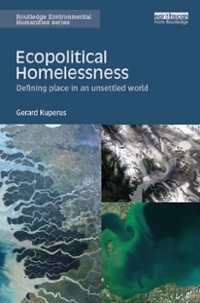'M= '0 ngcengagecom 0' lo. r11 l l5] I': CENGAGE I MINDTAP Q Search this course 0 n p Assignment 2 Attempts 4,5 l I Keep the Highest 4,5 / 6 4 . Welfare effects of free trade in an importing country Consider the New Zealand market for lemons. The following graph shows the domestic demand and domestic supply curves for lemons in New Zealand. Suppose New Zealand's government currently does not allow international trade in lemons. Use the black point (plus symbol) to indicate the equilibrium price of a tonne of lemons and the equilibrium quantity of lemons in New Zealand in the absence of international trade. Then, use the green point (triangle symbol) to shade the area representing consumer surplus in equilibrium. Finally, use the purple point (diamond symbol) to shade the area representing producer surplus in equilibrium. Note: Select and drag a ll area point from the palette to the graph. To ll in regions on the graph, merely drop the ll area point on the desired region. 1400 Domestic Demand Domestic Supply - Il- 1300 ' 1200 No Trade EqUIIIbnum '5; 1100 A I: E t 1000 Consumer Surplus {D O ng.cengage.com C B Grades - S21-Macr... ECON 160- Hw # 6 Cengage Learning MindTap - Cengag.. B When new zealand.. The following grap... C Consider The New... G Consider the New... CENGAGE |MINDTAP Q Search this course ? Sarthak v Assignment 2 X 1400 Domestic Demand Domestic Supply .+ A-Z 1300 No Trade Equilibrium 1200 O A 1100 1000 Consumer Surplus PRICE (Dollars per tonne) 900 800 Producer Surplus 700 600 bongo 500 400 0 20 40 60 80 100 120 140 160 180 200 QUANTITY (Thousands of tonnes of lemons) Based on the previous graph, total surplus in the absence of international trade is $ million. (Hint: Take note of the units on the axes of the graph.)SL' = r U ngcengagercom Cl r o r if] l lill ': CENGAGE MINDTAP Q Search this course 0 : Sarthak v n o I Assignment 2 Based on the previous graph, total surplus in the absence of international trade is $ ' million. (Hint: Take note of the units on the axes of the graph.) The following graph shows the same domestic demand and supply curves for lemons in New Zealand presented in the previous graph. Suppose that the New Zealand government changes its international trade policy to allow free trade in lemons. The horizontal black line (Pw) represents the world price of lemons at $800 per tonne. Assume that New Zealand's entry into the world market for lemons has no effect on the world price and that there are no transportation or transaction costs associated with international trade in lemons. Also assume that domestic suppliers will satisfy domestic demand as much as possible before any exporting or importing takes place. Use the green points (triangle symbols) to shade consumer surplus, and then use the purple points (diamond symbols) to shade producer surplus. (Note: Select and drag shaded regions from the palette to the graph. To resize the shaded regions, select one of the points and move it to the desired position.) 1400 Domestic Demand Domestic Supply 1300 h 1200 Consumer Surplus 1; 1100 *0 l: S t 1000 Producer Surplus 3 w -..- lH= '0 i Eng.cengagelcom Oi lei ii i lill ': CENGAGE MINDTAP Q Search this course 0 ; Sarthak v n 9 I Assignment 2 1400 Domestic Demand Domestic Supply h Consumer Surplus 8 Producer Surplus 1300 - 1200 - 1100 1 000 900 800 World Price PRICE (Dollars per tonne) 700 600 500 400 O 20 40 60 80 100 120 140 130 180 200 QUANTITY (Thousands of tonnes of lemons) When New Zealand allows free trade in lemons, the price of a tonne of lemons in New Zealand will be $800. At this price, the quantity of lemons demanded by New Zealand consumers will be tonnes , and the quantity of lemons supplied by domestic producers will be tonnes. Therefore, New Zealand will import tonnes of lemons. .











